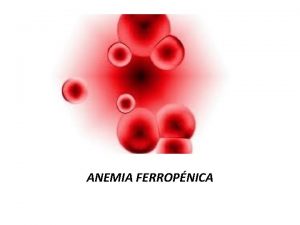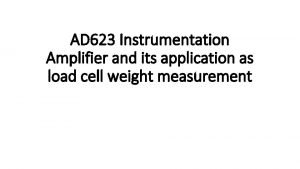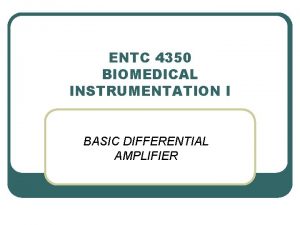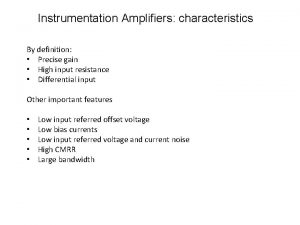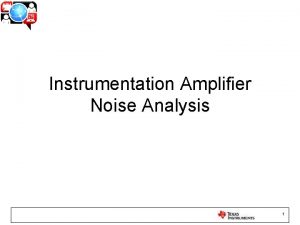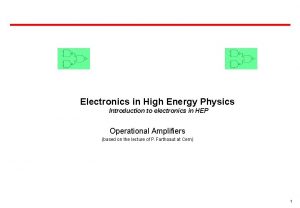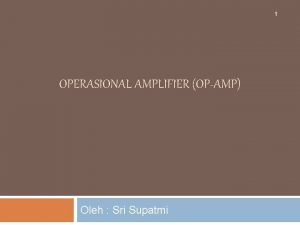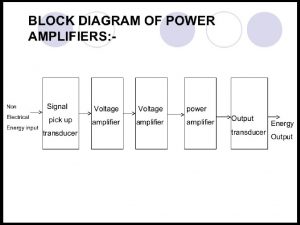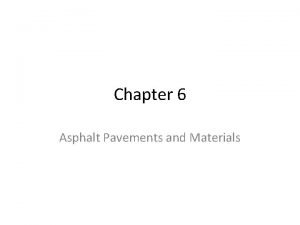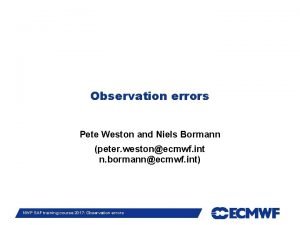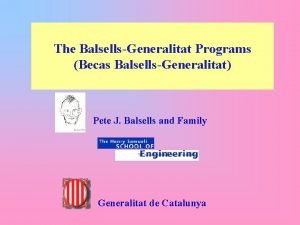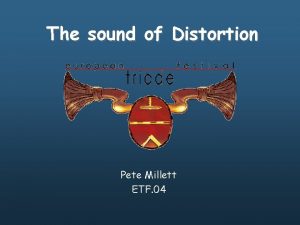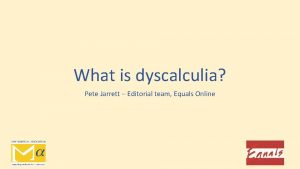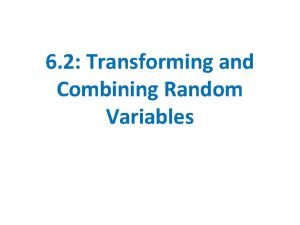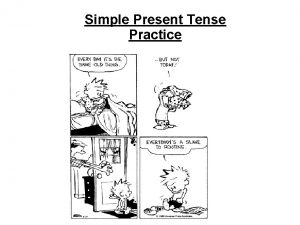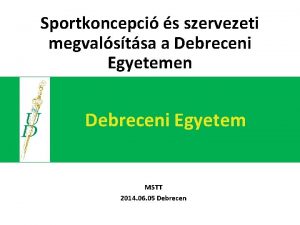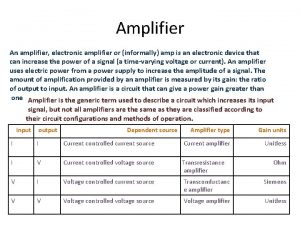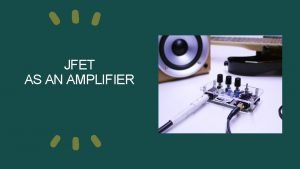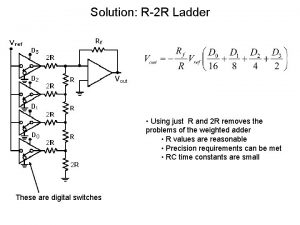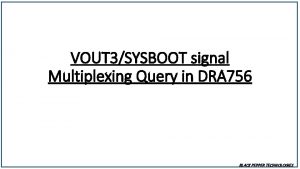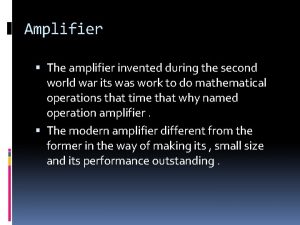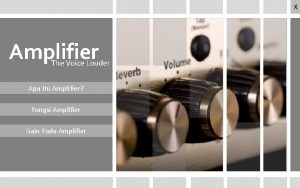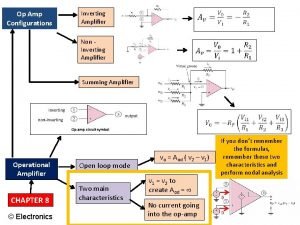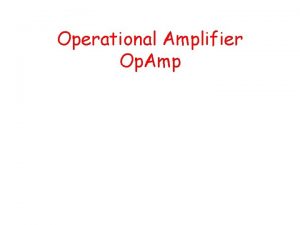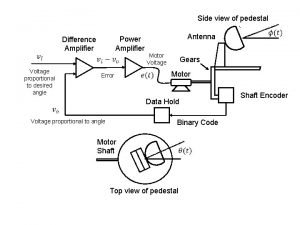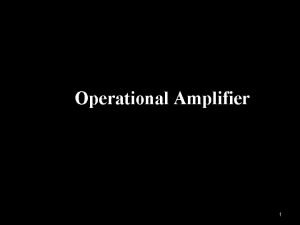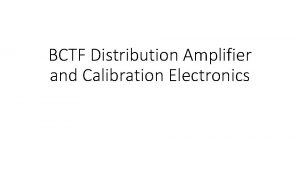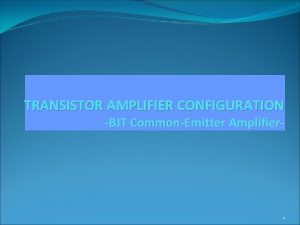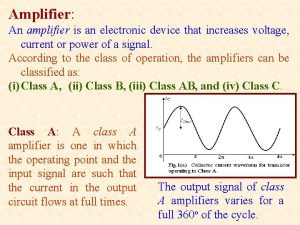Instrumentation Amplifier VCM vs VOUT Plots Pete Semig


















































- Slides: 50

Instrumentation Amplifier VCM vs. VOUT Plots Pete Semig Precision Linear Analog Applications Engineer Texas Instruments 1

Why does the output show distortion? 2 Vpp Differential Input INA 333, Vcm=2. 0 V (not shown), G=1 V/V, +/-2. 5 V dual supply, Vref=0 V 2

INA 333 Vcm vs. Vout Plot • This plot defines the linear output range – Depends on supply voltage, reference voltage, gain, and Vcm – Notice the output swing is <+/-1 Vpp when Vcm=2 V, which is consistent with previous slide 3

INA 333 Vcm vs. Vout Plots • Why is this an issue? – IA data sheets have plots for common device configurations – IA data sheets cannot have plots for all possible combinations of supply voltage, reference voltage, and gain – INA 333, for example, has 4 plots (2 single supply, 2 dual supply) – What if a design uses unbalanced supplies? Uncommon reference voltage? – We need to understand how to generate these plots for any application scenario 4

Instrumentation Amplifier Topologies 5

Traditional 3 -op amp topology • Most common IA topology • Two stages – Input stage – Output stage • Input stage made of 2 noninverting amplifiers (high input impedance) • Output stage is a difference amplifier (gain is R 2/R 1) • RG sets the gain of the device • Balanced signal paths yield excellent common-mode rejection ratio (CMRR) • VOUT is referred to VREF 6

2 -op amp IA • The INA 128 is an example of a 2 -op amp IA • Similar to 3 -op amp topology, it has high input impedance and adjustable gain • Signal path to output, however, is not balanced – Yields degraded CMRR performance • Therefore, these devices are generally less expensive than traditional 3 -op amp IAs 7

Current mirror topology • This IA topology is truly unique • It uses current mirrors in the design • This allows for true rail-torail input and output swings – No Vcm vs. Vout issues! • Low bandwidth • Requires 2 resistors to set gain 8

3 -op amp Instrumentation Amplifier Analysis 9

VCM and VD • Representation #1 • Representation #2 (typical) 10

3 -op amp IA analysis 11

VIA 1 and VOA 1 12

VIA 2 and VOA 2 13

Difference Amplifier 14

IA Transfer Function Derivation 15

VOA 3 & VIA 3 GOS=R 2/R 1 16

Node Equation Summary We have equations for all 6 nodes in terms of VCM, VD, GIS, GOS, and VREF What do we do with VD? 17

What about VD? • Need to eliminate VD from node equations. • Solution: solve the VOUT equation for VD and substitute! • We can now substitute the right side for VD in node equations 18

Node Equations Revisited • VD substitution & solve for VOUT • We can now plot VOUT as function of VCM, VREF, & gain • But, what are VIA 1, VIA 2, VIA 3, VOA 1, VOA 2, and VOA 3? ? 19

Op amp limitations • VCM and VOUT of an op amp are limited by the supply voltages according to the device’s data sheet 20

Op amp limitations – OPA 333 example VIA 1, VIA 2, VIA 3, VOA 1, VOA 2, and VOA 3 are the VCM and VOUT limits of the internal op amps! 21

The VCM vs. VOUT Plot 22

The VCM vs. VOUT Plot G=1 V/V, A 1 & A 2 VCM limits define linear region 23

The VCM vs. VOUT Plot G>1 V/V, linear region defined by VCM and VOUT limits 24

The VCM vs. VOUT Plot Linear region defined by VOUT limits, regardless of gain 25

Data sheet examples INA 111. Linear region independent of gain. Output swing limits of A 1 and A 2 must be equal to or more restrictive than VCM. 26

Data sheet examples INA 121. Linear region dependent on gain. At G=1 V/V, VCM must limit region. As gain increases, linear region limited by VCM and VOUT 27

A 1 & A 2 limits from data sheet 28

A 3 limits from data sheet 29

VCM vs. VOUT TINA-TI model • Now that we have the equations and A 1, A 2, and A 3 limits, we can plot the lines that define the linear operating region using TINA-TI 30

VCM vs. VOUT TINA-TI model (G=1 V/V) 31

VCM vs. VOUT TINA-TI model (G=10 V/V) 32

VCM vs. VOUT TINA-TI model vs. data sheet 33

VCM vs. VOUT TINA-TI model • Now we can customize the supply voltages, reference voltage, and gain 34

Level Shifting 35

Level Shifting 36

Level Shifting (INA 826) 37

Level Shifting (INA 826) 38

Level Shifting (INA 826) 39

Vcm vs. Vout TINA-TI model • Available for INA 333 & INA 826 40

Vcm vs. Vout TINA-TI model • Can be customized for any 3 -op amp IA • Use parameters to set Vbe, Gos, and A 1 -3 limits 41

Vcm vs. Vout TINA-TI model • VCVS are used to convert the parameters to node voltages based on the supply voltages 42

Vcm vs. Vout TINA-TI model • VCVS are used to separate GIS and GOS from overall IA gain 43

Vcm vs. Vout TINA-TI model • Derived equations are plotted for positive Vout values • Only minimum values are plotted 44

Vcm vs. Vout TINA-TI model • Derived equations are plotted for negative Vout values • Only maximum values are plotted 45

Vcm vs. Vout TINA-TI model example 46

Resources & Acknowledgements • 3 -part Article Series (EDN) – Part 1 – Part 2 – Part 3 • Precision Hub Blog (published on Planet Analog) – How Instrumentation Amplifier Vcm vs. Vout plots change with supply and reference voltage • Special thanks to Collin Wells and Tim Green. 47

Any questions? Thank you! 48

Extra Slides 49

2 -op amp IA with output gain stage • The INA 321 is a 2 -op amp IA with output gain stage • A 3 applies gain, which allows for more balanced signal paths that 2 op amp IA • This yields improved ac CMRR 50
 Pete container
Pete container Sideremia baja
Sideremia baja Normocromia normocitosis
Normocromia normocitosis Vcm 0833
Vcm 0833 Anemia megaloblastica
Anemia megaloblastica Instrumentation amplifier applications
Instrumentation amplifier applications Differential amplifier in biomedical instrumentation
Differential amplifier in biomedical instrumentation Isolated instrumentation amplifier
Isolated instrumentation amplifier Characteristics of instrumentation amplifier
Characteristics of instrumentation amplifier Instrumentation amplifier experiment
Instrumentation amplifier experiment Vout vin
Vout vin Contoh soal op amp inverting
Contoh soal op amp inverting Vutp and vltp
Vutp and vltp Difference between voltage and power amplifier
Difference between voltage and power amplifier Snell m2020 vs m2015
Snell m2020 vs m2015 Linux streaming telemetry
Linux streaming telemetry Pete schrumpf
Pete schrumpf Fmdss
Fmdss Asphalt
Asphalt Personal finance module
Personal finance module Pete sayers
Pete sayers Pete mandik
Pete mandik Pete carroll
Pete carroll Kosztopulosz andreász
Kosztopulosz andreász Pete kenyon
Pete kenyon Pete lindstrom
Pete lindstrom Triumf pete
Triumf pete Toy story foreshadowing
Toy story foreshadowing Bankszámlapénz fogalma
Bankszámlapénz fogalma Pete isensee
Pete isensee Dr pete judit
Dr pete judit Foundeo
Foundeo Two thanksgiving day gentlemen
Two thanksgiving day gentlemen Mimvista
Mimvista Pete weston
Pete weston Read the extract from your pen friend pete's letter
Read the extract from your pen friend pete's letter Beques balsells
Beques balsells Professor pete's classroom
Professor pete's classroom Pete dignan
Pete dignan Pete millett
Pete millett Pete jarrett
Pete jarrett Farmer pete number bonds
Farmer pete number bonds Combining normal random variables
Combining normal random variables Simple present tense have
Simple present tense have Topic sentence examples
Topic sentence examples Lanspre
Lanspre Pete janeway
Pete janeway Pete paragraph
Pete paragraph Pete rosengren daily herald
Pete rosengren daily herald White color song
White color song Pannon egyetem testnevelés pete
Pannon egyetem testnevelés pete


